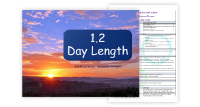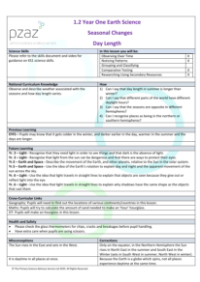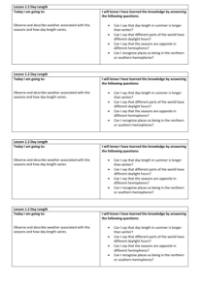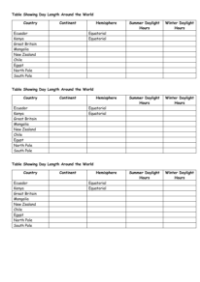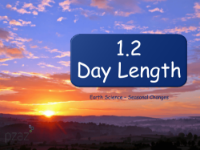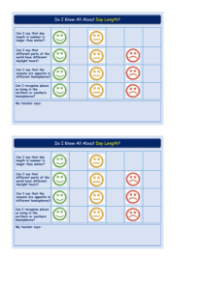Day Length - Teacher Explanation

Science Resource Description
Welcome to the first lesson on Day Length, part of the Year 1 unit on Seasonal Changes. This lesson aims to help pupils observe and describe weather patterns associated with different seasons and understand how the length of a day varies. For safety, ensure that all glassware, such as thermometers, is intact and not damaged before use. Also, supervise the children when they use scissors. The lesson offers cross-curricular links to geography, as pupils will locate various countries; to maths, as they calculate the amount of salt for hourglass activities; and to design and technology (DT), as they construct hourglasses.
During this lesson, pupils will create a simple model of planet Earth using an orange, a pencil, markers, and a torch. Working in groups of four, they will identify the poles, equator, hemispheres, and draw approximate locations of countries. The model will help demonstrate the concept of day and night cycles due to the Earth's rotation. Pupils will also research daylight hours in different countries, discovering that equatorial regions experience consistent day lengths while polar regions have extreme variations. Another activity involves using a stopwatch, thermometer, and torch to explore why it gets warmer during the day. Lastly, pupils will craft hourglasses to understand ancient timekeeping methods, incorporating numeracy skills to determine the amount of salt required for the hourglass to measure specific time intervals. With these engaging tasks, pupils will gain insights into the cyclical nature of day and night and the impact of the Earth's position on weather and time.
